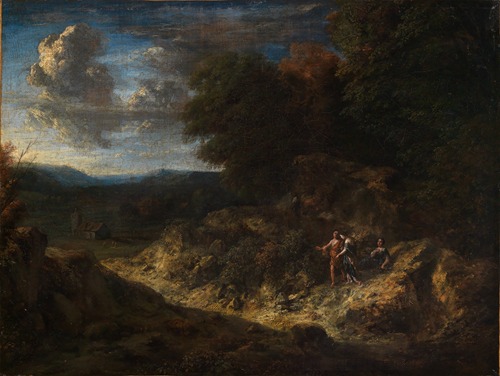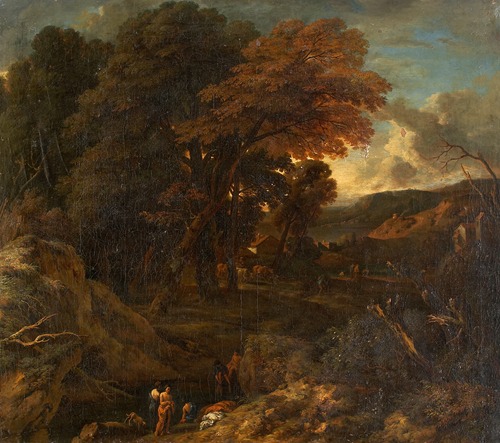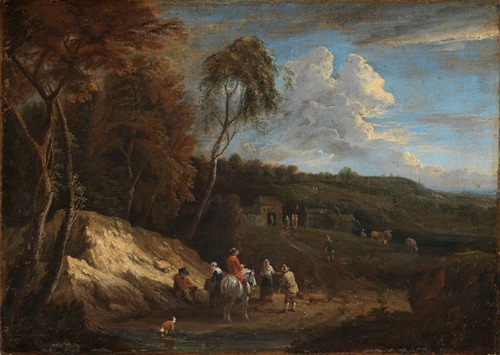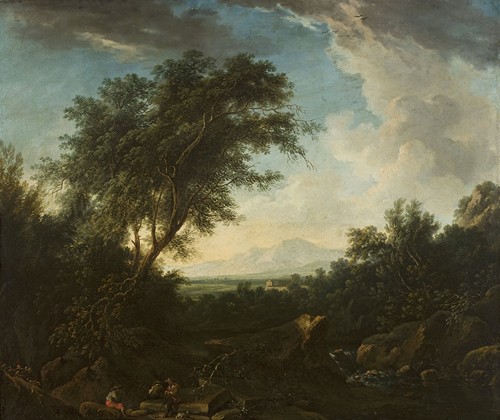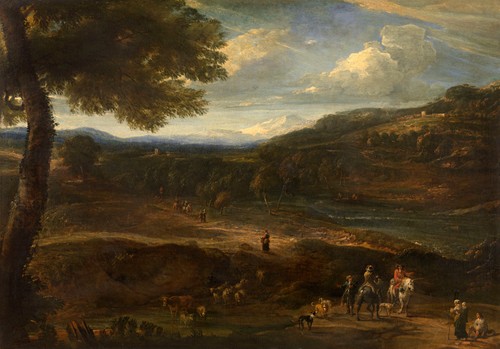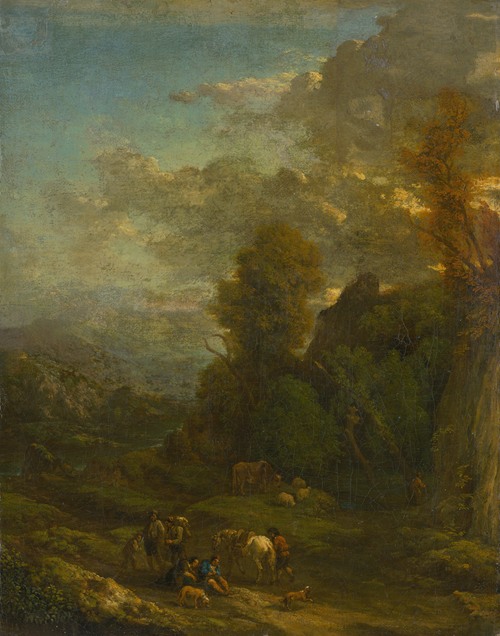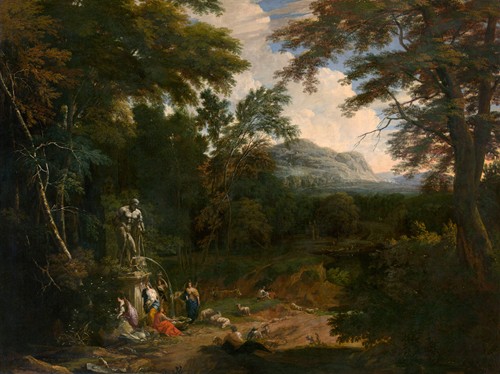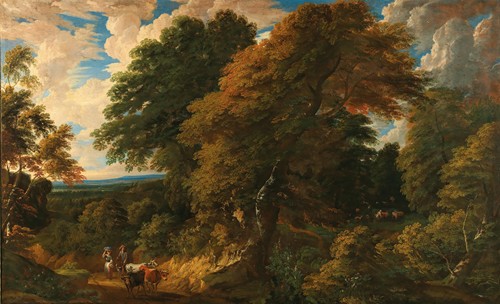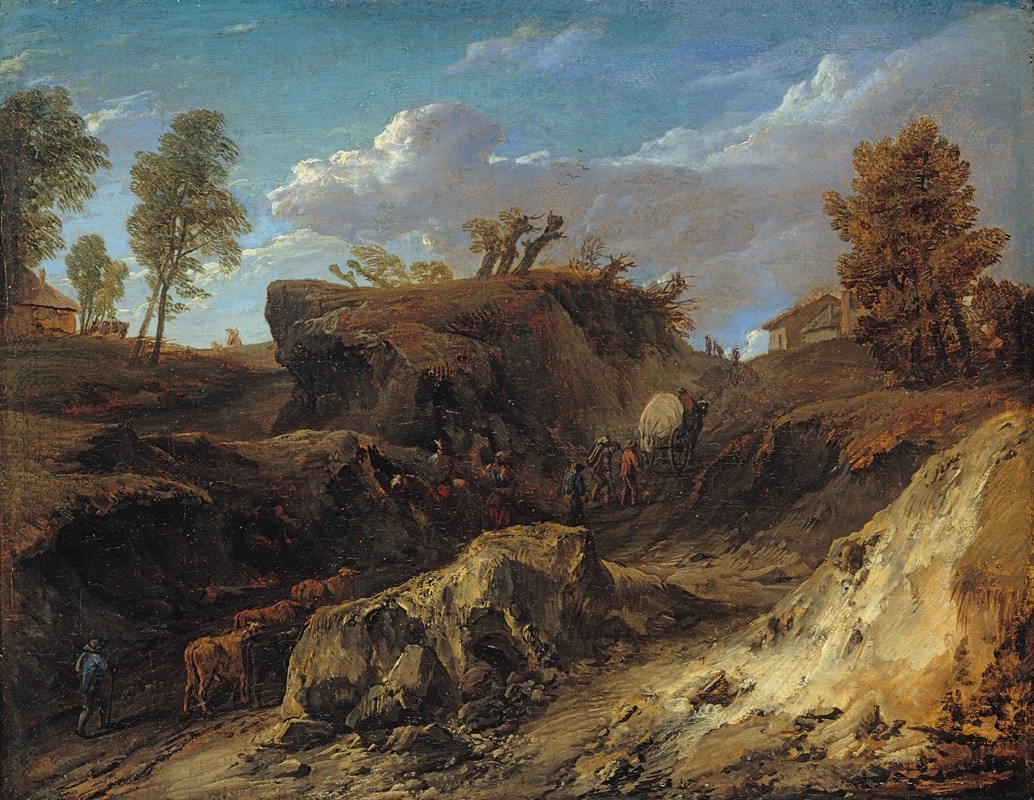

Cornelis Huysmans was a Flemish landscape painter who was active in Antwerp, Brussels and Mechelen. Huysmans held a foremost position in Flemish landscape painting in the late 17th and early 18th century and was particularly known for his pseudo-Italianate landscapes with mountains in the background, which show the influence of Nicolas Poussin and Jacques d'Arthois.
Cornelis Huysmans was born in Antwerp to Hendrik Huysmans and Catharina van der Meyden (sometimes also referred to as 'Catharina van der Heyden'). His father's profession has been variously described as that of a 'bouwmeester' (master builder) or that of a 'houtbreker, munter ende werckman in Sijne Majesteytsmunte' (wood breaker, coin maker and workman in His Majesty's Mint).
Upon the early death of his parents, his guardian sent him to study under the landscape painter Gaspar de Witte. After completing his studies with de Witte, Cornelis Huysmans moved to Brussels to continue his studies. He set up permanent residence in Brussels between 1675 and 1682 although he continued to visit his hometown Antwerp. He may have been a pupil or at least worked as an assistant in the studio of Jacques d'Arthois in Brussels. Huysmans worked for d'Arthois and drew landscapes from the Brussels area for two years. Around 1675 he did the same in the Meuse valley near Dinant and Namur. In 1675 he was admitted as an independent master of the Guild of Saint Luke in Brussels. During a stay in Anwerp in 1681 the artist declared that he was at the time living in Brussels.
The following year Huysmans moved to Mechelen. Here he married on 26 January 1682 Maria Anna Scheppers. The couple had two sons and one daughter. His son Pieter Balthasar Huysmans, who was born on 7 January 1684, was trained by his father but died young in 1706. From about 1686 to 1688, Cornelis Huysmans stayed in London where he appears to have enjoyed the patronage of prominent members of society. He created several large format landscapes for the London market.
In 1688 Huysmans signed an agreement with the painters' guild of Mechelen, which allowed him to work as a painter in the city. He had to pay the guild 24 guilders and 14 stuivers for the privilege. In Mechelen Huysmans created the large-scale altarpiece The Road to Emmaus for the local Onze-Lieve-Vrouw-over-de-Dijle church in 1690. It is still in situ. Possibly he later ran into some problems with the painters' guild in Mechelen as he moved back to Antwerp, where he was admitted as a master in the local Guild of St Luke in the guild year 1706–7. He worked in Antwerp until 1716, the year in which he returned to Mechelen where he continued to work until his death in 1727.
He was the first teacher of his younger brother Jan Baptist (1654–1716), who also became a landscape painter, as well as of his son Pieter Balthasar. In Mechelen Augustus-Casimir Redel (August Casimir Redel or Ridel) and Jean Edmond Turner were his pupils.
